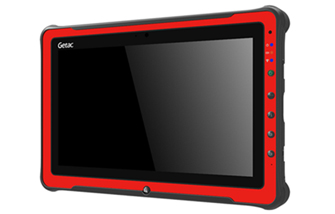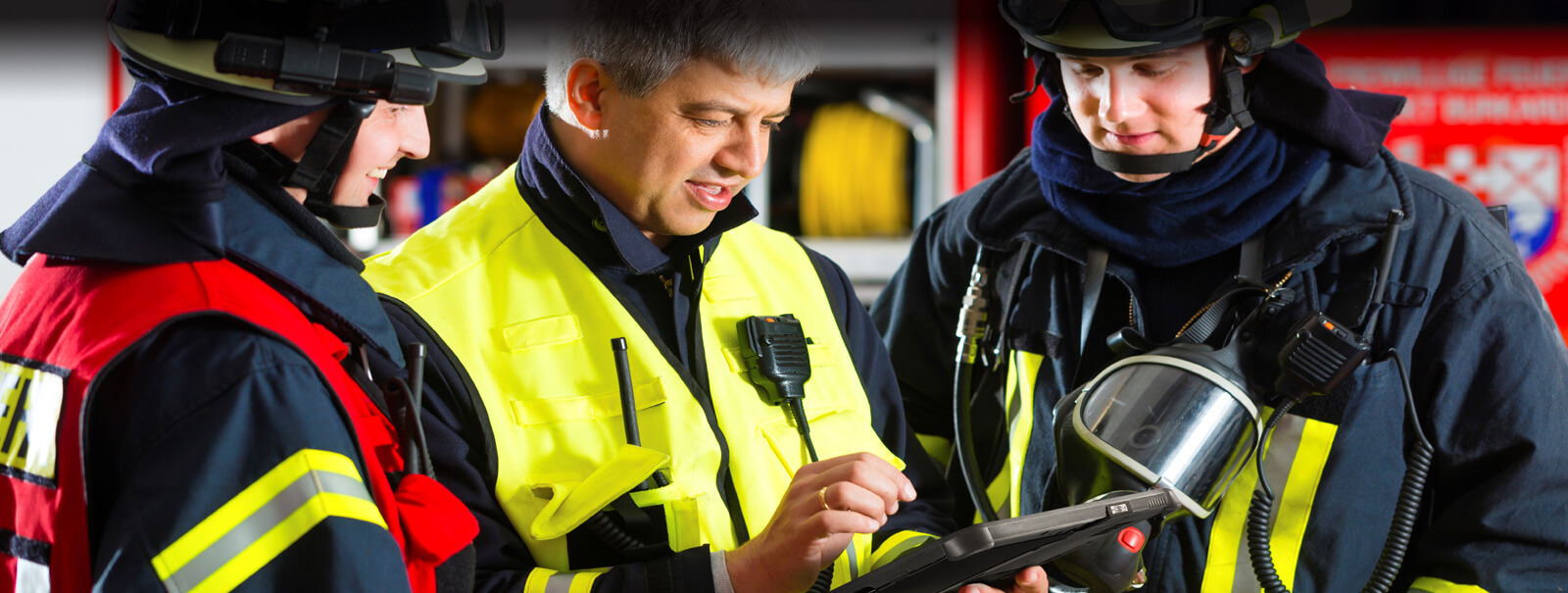
SUPPORTING ONE OF EUROPE’S LARGEST FIRE SERVICES

Overview
A national Fire and Rescue Service had a requirement for sophisticated, rugged mapping devices for the front of their fire trucks, enabling them to go to a site and immediately pull up all the accurate imaging for potentially dangerous obstructions, such as gas and water mains.
Their legacy devices needed to be replaced with more rugged devices that were able to cope with not only the physical demands of being used in emergency situations, including contact with water, dust, smoke and chemicals, but also to have the storage capacity for heavily image-based mapping data. The devices needed to fit into a dock, whilst allowing enough room for the fire crew to remove them quickly and easily at the scene of an emergency.
Background
The Fire and Rescue Service is one of the largest in the world. They respond to many different emergency incidents including road traffic collisions, rope rescue, water rescue, hazardous materials and flooding, all of which come with their own challenging dangers. They are a national organisation delivering front-line services locally from three strategically positioned hubs.
Due diligence
The Fire and Rescue Service started the project at the end of 2015, by issuing an RFI for new hardware devices to be installed on the fire trucks. The RFI was sent to four companies and Centerprise International (CI) provided the only fully compliant bid. The evaluation equipment was purchased, which was a combination of Panasonic and Getac mapping devices. The Fire and Rescue Service spent six months testing the devices meticulously, using external resources to help them evaluate the kit.
In July 2016, they issued a tender for the procurement and installation of 23 pilot devices. The pilot installation project involved quite a substantial spend, which reinforced their commitment to getting the most appropriate technology in place. CI put forward a proposal and also won the installation contract.
Product of choice
The fully rugged build of the F110 tablets means they are able to stand up to demanding use at emergency scenes, while providing crews with mission-critical, heavily image-based risk assessment data. The ability to mount the the devices into a dock or carry them on a hand strap is a huge advantage.
Some of the many benefits of the Getac F110 include:
- Enhanced enterprise security with optional Intel vPro and Windows Hello face-authentication camera
- 7th Generation Intel core processor
- 11.6" LumiBond® 2.0 Display with Getac sunlight readable technology
- Capacitive multi-touch screen
- 6 configurable options to fit diverse data collection needs
- Vibration and drop-resistant

Seamless project management
CI already had a good working relationship with Terrafix, a partner in Staffordshire who had helped with previous Getac installations. The main benefits of continuing to use Terrafix for this project were the fact that they had a configuration facility nearby (keeping costs down as no overnight hotel costs were required), and they had recently completed a full configuration of an Ambulance HQ, two miles down the road, using similar Getac devices.
There were a few challenges during the pilot phase because of the geographical locations of some of the fire trucks. The installation remit covered some remote areas, and many of the fire trucks were in retained stations, only going back to HQ once a year for annual maintenance. Therefore, many of the fire trucks had a very tight window for the Getac installations which had to be carried out alongside the maintenance work.
The Fire and Rescue Service engineers had to physically tilt the fire engines over a bay, so the logistics were complex and the client was very conscientious in their attention to detail. The trunking underneath the vehicles had to be laid out to the exact millimetre and they even coloured the besels in fire engine red, to maintain the branding throughout.
Dave Taylor, Account Manager Systems Integrators at CI, was the project management lead. It takes a lot time and careful planning to take a fire truck off schedule, so CI worked very closely on a daily basis with the Fire and Rescue Service as well as the partner company, to ensure that the installations ran as smoothly as possible.
The installation of 23 pilot devices quickly became 100, as they wanted to deploy more off the back of the pilot. After three iterations, the Fire and Rescue Service made the full order in June 2017 to install 100 new devices. The installations were complete by September 2017, within the scheduled three-month timescale.
CI also offered the services of their South Wales facility, to load all the images onto the devices, which the client agreed to. The images for the Getac devices were sent across their internal private network, uploaded quickly and securely. This additional element from CI saved the client hours of resource, both in time and money.
Future plans
CI is now the sole supplier of rugged devices for the Fire and Rescue Service who have approximately 600 fire truck. Another RFI was issued in July 2017 for an additional 500 devices, which CI was awarded in September 2017. They are now on contract, with the possibility of a two-year extension.




